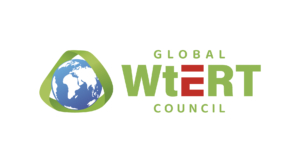Review of WTE ash utilization processes under development in northwest Europe
By A.C. (Thanos) Bourtsalas
Published year: 2012
Department of Civil and Environmental Engineering, Imperial College London
Earth Engineering Center, Columbia University
Executive Summary
An important finding is the implementation of dry discharge technology in several plants in Japan and two plants, in Switzerland, Europe: SATOM Monthey WTE and KEZO Hinwil. The Dry Discharge system facilitates the recovery of metals, both ferrous and non-ferrous, and also minerals from incinerator bottom ash (IBA). Also, since water is not used, the weight of ash to be disposed (approximately 20% wt. less), and consequently, the cost of disposal (including transportation), is considerably less. In addition, dry discharge exhibits higher energy efficiency, lower total organic carbon (TOC) in the IBA, significant reduction of the leaching of IBA in landfills, and finally, by adding water under controlled conditions the chemical reactions can be activated.
According to a research study by Dr. Leo Morf of the Office for Waste, Water, Energy, Air, Department of Waste Management in Zurich, the dry discharge method has shown 45% increase in ferrous metal recovery and 50% in non-ferrous metals, over the wet discharge method.
The main disadvantage of this process is the generation of dust emissions by the very fine dry IBA particles, which needs special treatment. However, many industries, e.g. flour mills, cement plants and others, can manage dust issues in a sustainable manner. Prerequisite is a sealed transport system, in which many WTE industries are unfamiliar. Additionally, many WTE plant operators juxtapose dry discharge technology; advocating that the use of tertiary air flow through the discharger may create a problem to the combustion process, since there is lack of the water barrier and, thus, the dry discharge technology is characterized as open system, However, taking into consideration the fact that the fine dust is transferred back to the combustion chamber through the tertiary air flow; the system is actually closed. Furthermore, the tertiary air flow completes burning of IBA; and by eliminating the very fine particles and recirculating them to the incinerator, advances the quality of IBA and makes the further treatment easier. Wet discharge technology is the dominant method currently applied for IBA discharge in most WTE plants worldwide. Recent developments by Martin Gmbh proved that an alternative method of dry discharge of IBA can be used. The introduction of advanced innovative treatment systems for the discharged IBA has increased metal extraction efficiency and quality of residues for further uses in construction industry. However, there is still a significant fine fraction, dependent on the technology used, corresponding to approximately 45% of the total IBA, which does not exhibit acceptable properties for further use, creating a bottleneck for the sustainability of WTE worldwide. Current research at Imperial College London by the author showed that the unsustainable fine fraction of IBA, which is disposed of in landfills, can be used as raw material for the production of glass ceramic composites to be further used in the construction industry.
